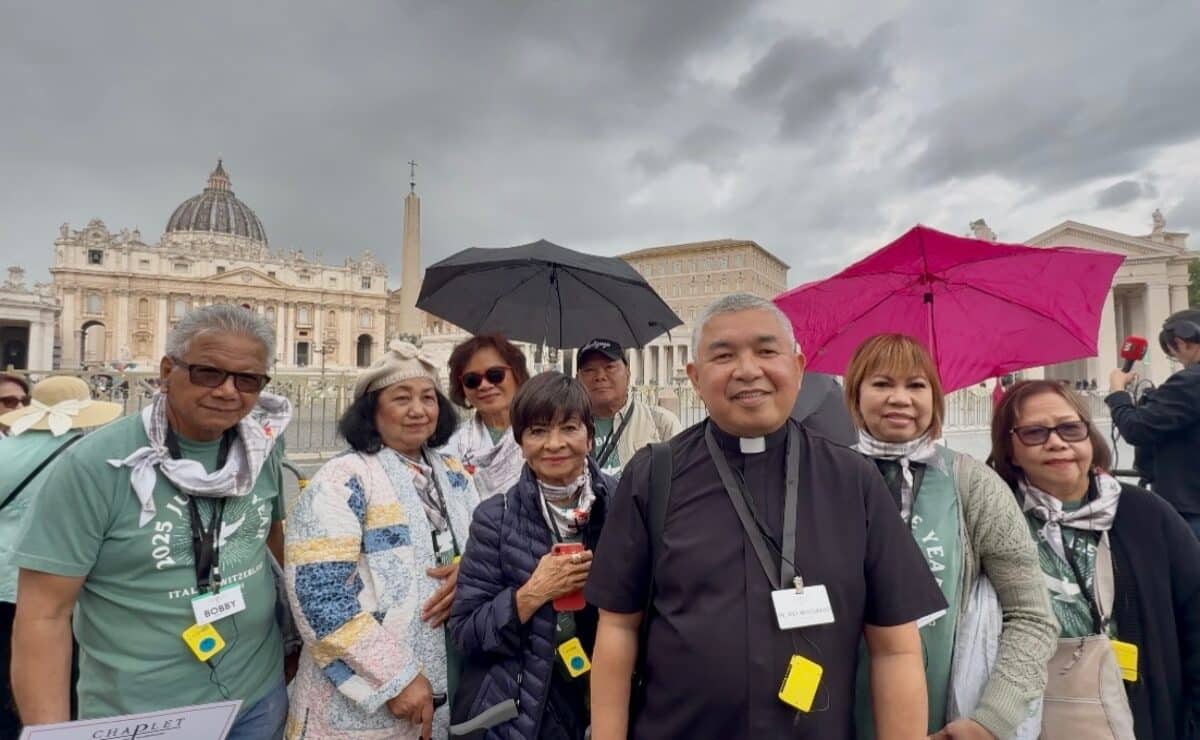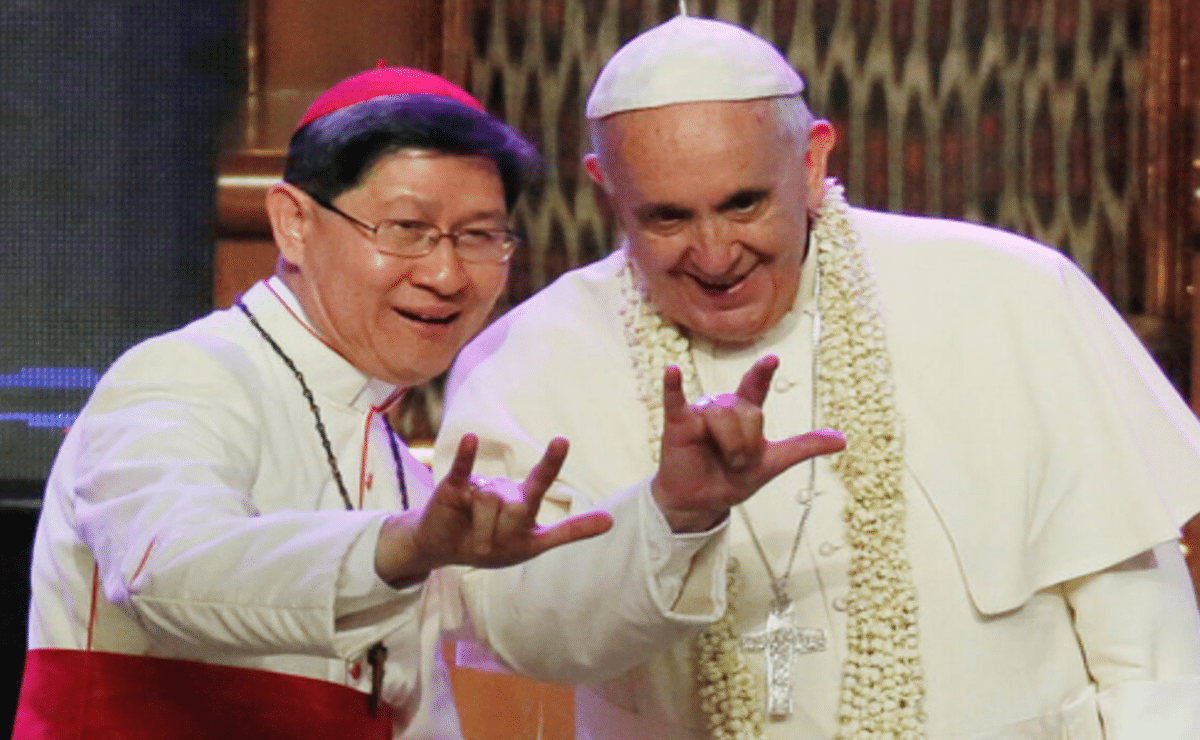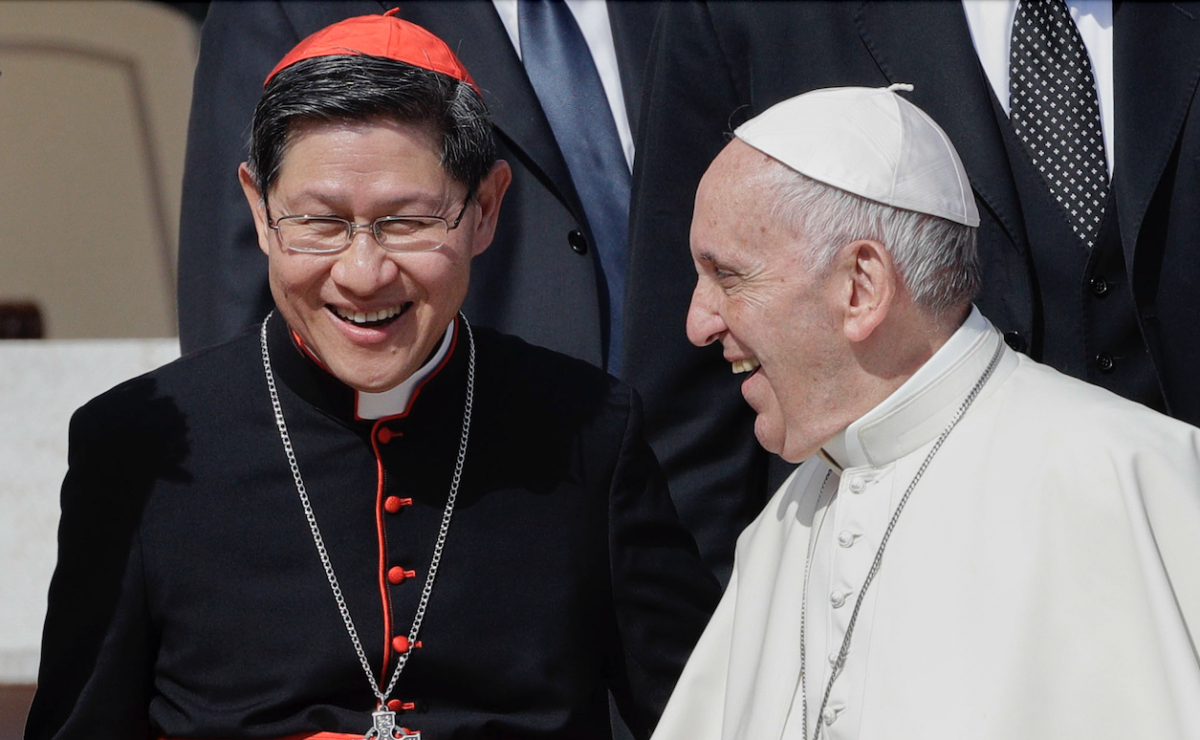Filipino pilgrims keep up hopes for Cardinal Tagle to succeed Pope Francis

Fr. Rey Matunog (center) of the Archdiocese of Los Angeles leads a group of 46 Filipino Catholic pilgrims at the Vatican. Photo by Elton Luggage
VATICAN CITY – As billows of black smoke rose from the chimney of the Sistine Chapel Wednesday, several Filipino Catholic pilgrims from California kept their hopes up for the Church to be led by a pope who is one of their own: Cardinal Luis Antonio Tagle.
Black smoke signaled that no pope had been elected as 133 cardinals opened the secretive, centuries-old ritual to choose a new leader of the Catholic Church.
“We believe in the power of the Holy Spirit. I hope the cardinals will be touched by the Spirit when choosing the next pope. Our faith is important now more than ever,” said Fr. Rey Matunog of the Archdiocese of Los Angeles, who was among the massive crowds of people gathered in St. Peter’s Square.

FILE PHOTO
Fr. Matunog led a group of 46 Filipino American Catholics from Southern California in an annual pilgrimage to Rome and Switzerland. The group made a special trip to the Vatican to show their support for Cardinal Tagle.
He believes that Cardinal Tagle possesses all the qualities needed to become the next pope.

FILE PHOTO
“We pray that one of our Filipino cardinals, especially Cardinal Tagle, will be chosen as the new pope because it would be a blessing not only for the Church but also for Filipinos worldwide,” said Fr. Matunog, as their group continued to wait for the white smoke that will signify that one of the 133 cardinals has secured two-thirds of the votes to become the next pope.
The doors of the Sistine Chapel shut after the cry of “extra omnes” — Latin for “all out” — and 133 red-robed cardinals – including Cardinals Tagle, Jose Advincula, and Pablo Virgilio David – began the ritual of electing a new pope.
They entered the Sistine Chapel in pairs, chanting the meditative “Litany of the Saints” as Swiss Guards stood at attention. The hymn implores the saints to help the cardinals find a successor to Pope Francis to lead the 1.4 billion-strong Catholic Church.
There is no fixed schedule for how long the conclave will last. In 2013, Pope Francis was elected in just one day, but historically, some papal elections have taken years. In 1271, Pope Gregory X’s election had taken three years.
Voting will occur four times each day – twice in the morning and twice in the evening – until a candidate secures enough votes to become the next pope.

